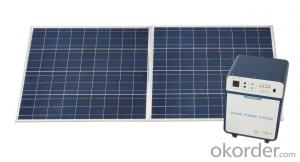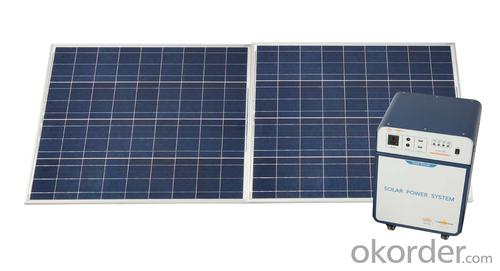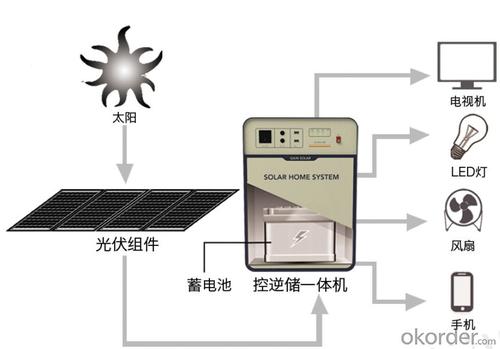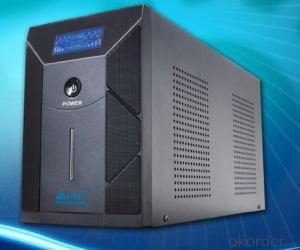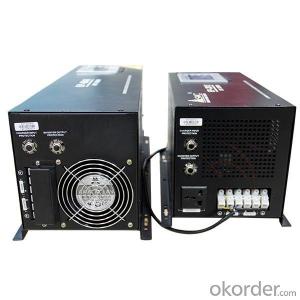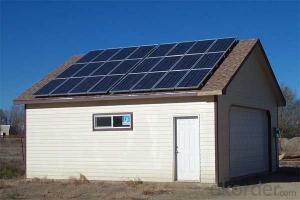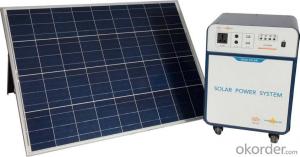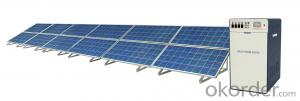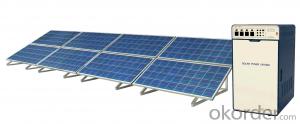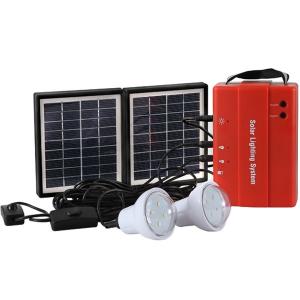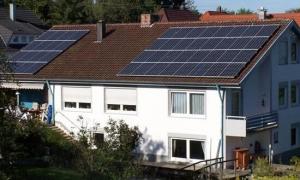Greenlogic Solar Energy Systems - Off-Grid Solar Power System JS-SPS-300
- Loading Port:
- Tianjin
- Payment Terms:
- TT or LC
- Min Order Qty:
- 10 set
- Supply Capability:
- 10000 set/month
OKorder Service Pledge
OKorder Financial Service
You Might Also Like
General Introduction
Solar power system provides alternating current and direct current, which is produced by the modules transforming solar power into power, to home lighting, household appliance and other DC appliance, such as cell phone and laptop.
Solar power system is widely used in area lack of power, for example house power supplying, monitoring, communication base, fire prevention in forest area, pasture and meadow, aquaculture etc.
We are dedicated to provide high quality off-grid PV products and systems to customers and has received a series of certificate, including ISO9001, TUV, UL, CE, CQC and RoHS.
Off-grid Solar Power System
High efficent PV module can produce more power.
Sine wave output is suitable for all kinds of load. Varieties of DC output, let it more convenient for users.
The multifunction design make it easy to operation and maintenance.
Off-grid Solar Power System Parameters

Off-grid Solar Power System Application
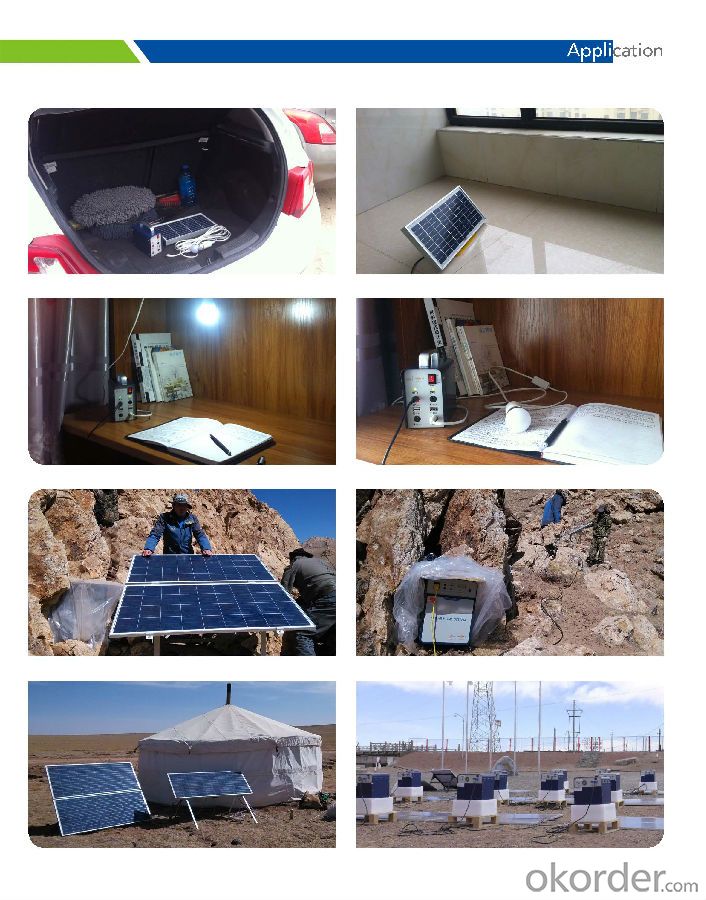
Our Factory

- Q: What is the role of solar-powered water heaters in solar energy systems?
- The role of solar-powered water heaters in solar energy systems is to utilize the sun's energy to heat water for various purposes such as domestic use or space heating. By harnessing the sun's energy, these heaters reduce reliance on fossil fuels, decrease carbon emissions, and contribute to a more sustainable and environmentally friendly energy system.
- Q: Can solar energy systems be installed on multi-story buildings?
- Yes, solar energy systems can be installed on multi-story buildings. In fact, many multi-story buildings have successfully implemented solar panels on their rooftops or façades to harness solar energy and generate electricity.
- Q: Can solar energy systems be used in powering religious institutions like churches or temples?
- Yes, solar energy systems can definitely be used to power religious institutions like churches or temples. Solar panels can be installed on the rooftops or surrounding areas of these buildings to harness sunlight and convert it into electricity. This renewable energy source can help reduce the carbon footprint of these institutions, lower their energy costs, and serve as a sustainable and environmentally-friendly solution for their power needs.
- Q: Can a solar energy system be installed on a sports arena or stadium?
- Yes, a solar energy system can be installed on a sports arena or stadium. In fact, many stadiums around the world have already implemented solar panels to generate clean and renewable energy. These systems can be installed on rooftops, parking lots, or even integrated into the design of the stadium itself. Not only does this help reduce the carbon footprint of the facility, but it also helps offset energy costs and promotes sustainability in the sports industry.
- Q: How does the angle of solar panels affect their performance?
- The angle of solar panels significantly affects their performance. The optimal angle for solar panels is typically determined by the latitude of the installation site. If the angle is too steep, sunlight may be reflected away, reducing the overall energy output. Conversely, if the angle is too shallow, the panels may not receive the maximum amount of sunlight, resulting in decreased efficiency. Therefore, choosing the correct angle is crucial to ensure optimal solar panel performance and maximize energy generation.
- Q: Can solar energy systems be used in areas with limited access to the grid?
- Yes, solar energy systems can be used in areas with limited access to the grid. In fact, solar energy is particularly well-suited for such areas as it provides a decentralized and independent source of power. By installing solar panels and utilizing batteries, communities and individuals can generate and store their own electricity, reducing their reliance on the grid. This makes solar energy an excellent solution for remote locations, developing countries, and areas prone to grid outages or disruptions.
- Q: What is the payback period for a solar energy system?
- The payback period for a solar energy system can vary depending on factors such as the cost of the system, the amount of energy it generates, and the local electricity rates. On average, however, it typically ranges between 5 to 10 years.
- Q: Can solar energy systems be used for powering electric vehicle solar charging stations at airports?
- Yes, solar energy systems can definitely be used for powering electric vehicle (EV) solar charging stations at airports. Solar panels can be installed on the roofs of parking structures or on the ground near the charging stations to capture sunlight and convert it into electricity. This electricity can then be used to power the EV charging stations, providing a clean and sustainable source of energy. Using solar energy to power EV charging stations at airports offers several benefits. Firstly, it reduces the reliance on fossil fuels and decreases greenhouse gas emissions, contributing to a more sustainable and environmentally friendly transportation system. Secondly, it helps airports meet their renewable energy goals and reduce their carbon footprint. Additionally, solar-powered charging stations can provide a reliable source of electricity even during power outages or grid failures, ensuring uninterrupted charging services for electric vehicles. Moreover, airports are typically large open spaces with ample sunlight, making them ideal locations for solar installations. With proper planning and design, solar panels can be integrated seamlessly into the airport infrastructure, maximizing the energy generation potential. This can help airports become more energy independent and reduce their operating costs by generating their own electricity. In conclusion, solar energy systems are a viable and effective solution for powering electric vehicle solar charging stations at airports. By harnessing the power of the sun, airports can provide clean and sustainable energy for EVs, contributing to a greener transportation system and a more sustainable future.
- Q: Is it possible to sell excess electricity generated by a solar energy system?
- Yes, it is possible to sell excess electricity generated by a solar energy system through a process known as net metering or feed-in tariffs. These programs allow homeowners or businesses with solar panels to sell their surplus power back to the grid, effectively offsetting their electricity costs and potentially earning income.
- Q: What happens to excess electricity generated by a solar energy system?
- Excess electricity generated by a solar energy system is typically fed back into the grid, allowing other consumers to benefit from the surplus power. This process is known as net metering, where the excess energy is credited to the system owner's account and can be used to offset future electricity bills.
Send your message to us
Greenlogic Solar Energy Systems - Off-Grid Solar Power System JS-SPS-300
- Loading Port:
- Tianjin
- Payment Terms:
- TT or LC
- Min Order Qty:
- 10 set
- Supply Capability:
- 10000 set/month
OKorder Service Pledge
OKorder Financial Service
Similar products
Hot products
Hot Searches
Related keywords
